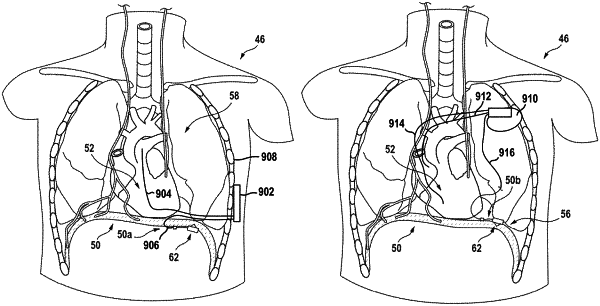| CPC A61N 1/3601 (2013.01) [A61B 5/024 (2013.01); A61B 5/113 (2013.01); A61B 5/287 (2021.01); A61B 5/349 (2021.01); A61B 5/4836 (2013.01); A61B 5/686 (2013.01); A61B 5/6867 (2013.01); A61B 5/721 (2013.01); A61N 1/3627 (2013.01); A61N 1/36585 (2013.01); A61B 2562/063 (2013.01)] | 16 Claims |

|
1. An implantable cardiac device comprising:
a diaphragm lead configured to be implanted on or adjacent a diaphragm;
one or more cardiac leads configured to be implanted in or on a heart; and
an electronics component having an electrical circuit structure configured to electrically couple with the diaphragm lead and the one or more cardiac leads, the electrical circuit structure configured to:
detect a cardiac event in a cardiac cycle based on a signal sensed through the one or more cardiac leads, and
deliver asymptomatic electrical stimulation therapy to the diaphragm through the diaphragm lead in response to the cardiac event.
|